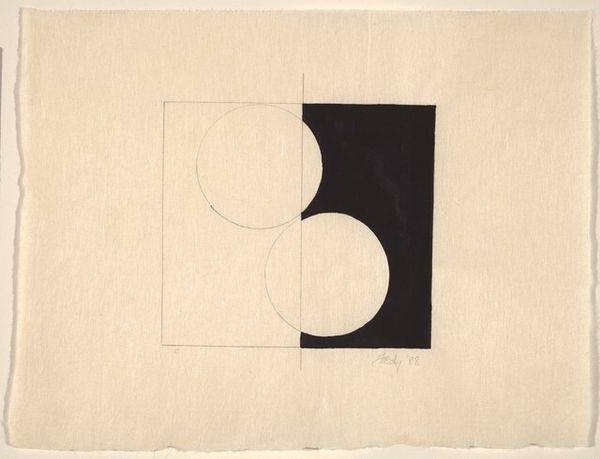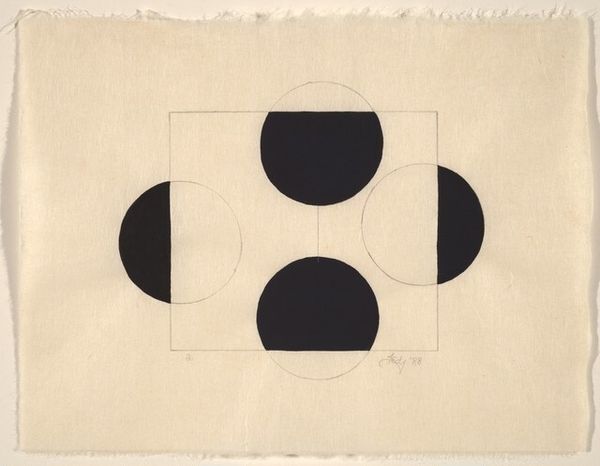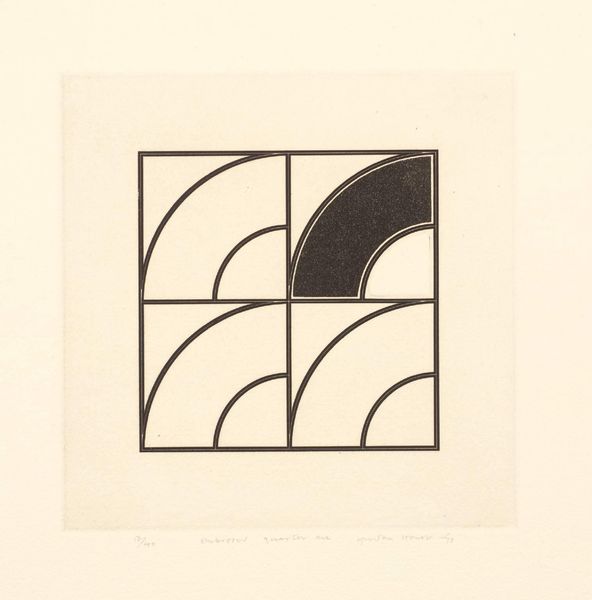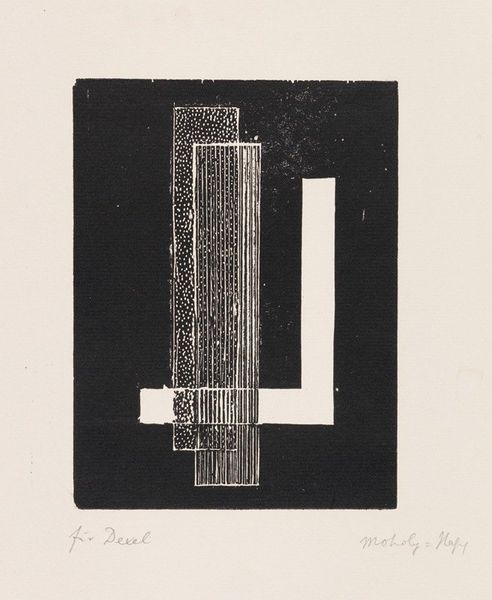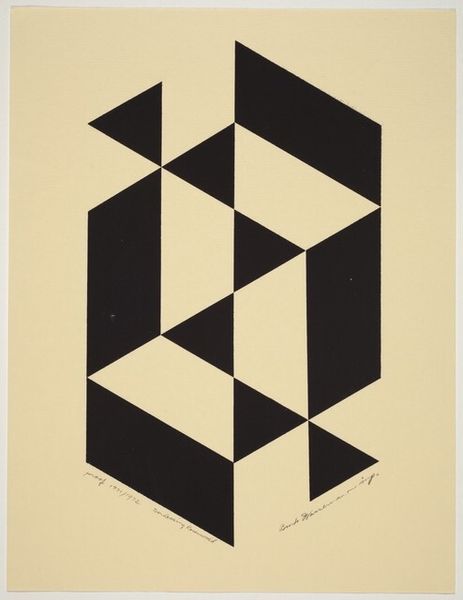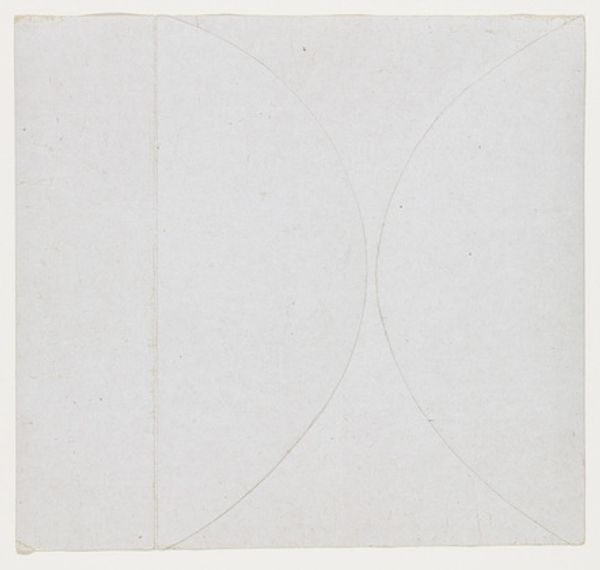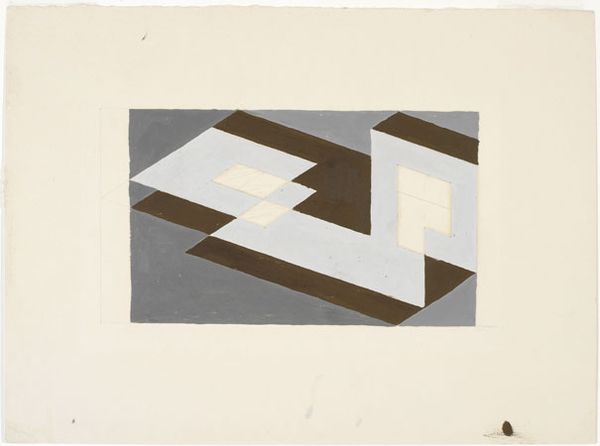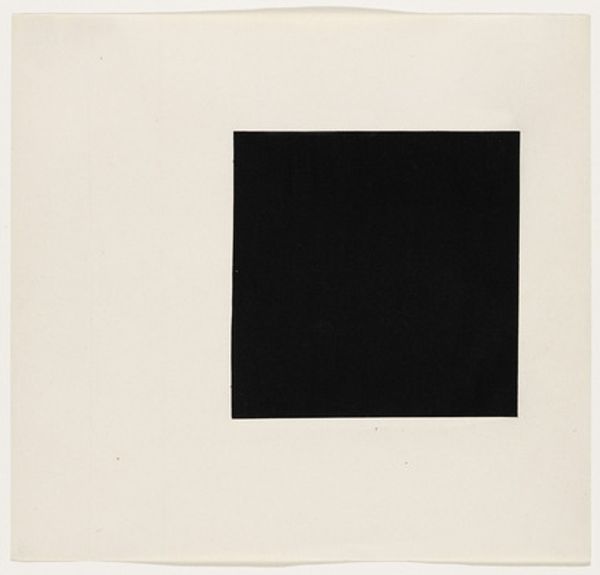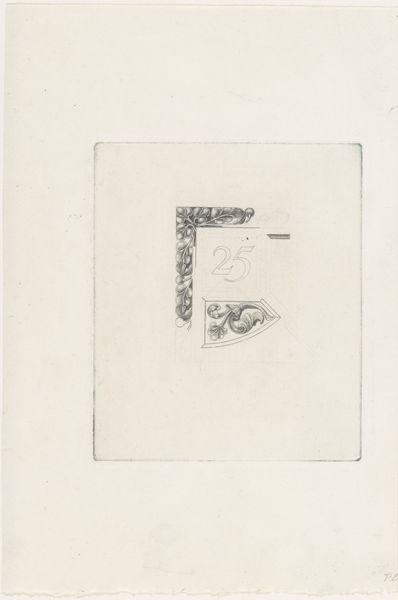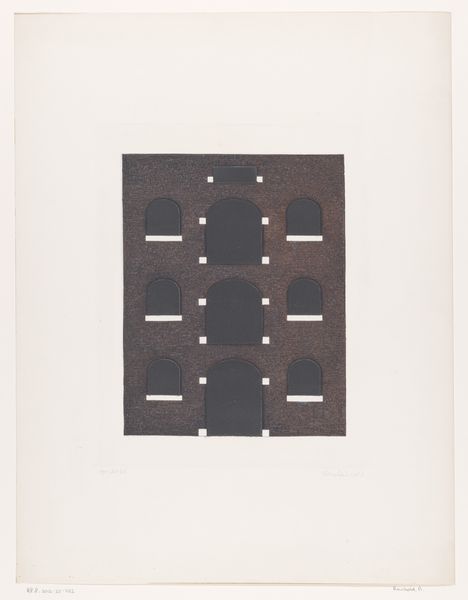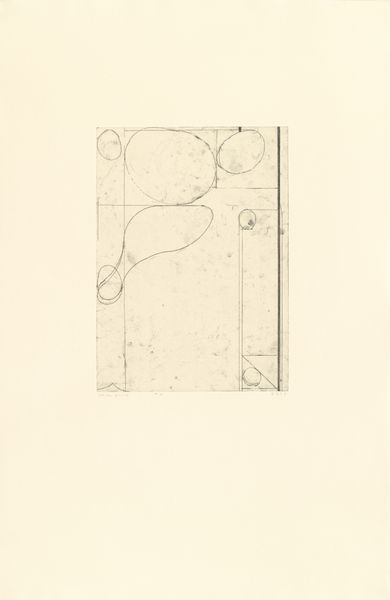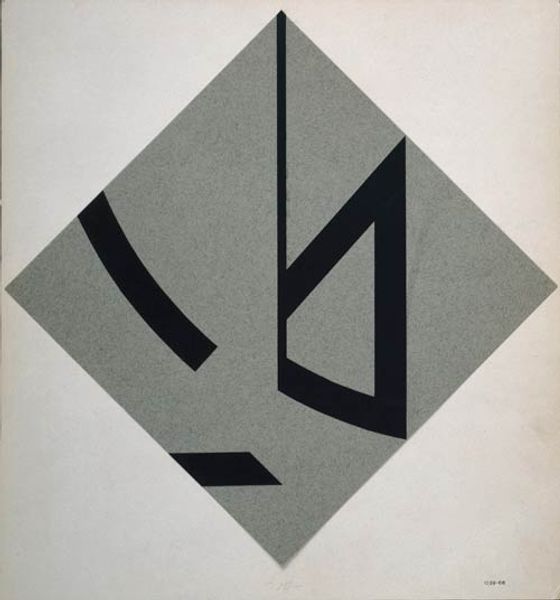
drawing, graphic-art, paper, ink
#
photo of handprinted image
#
drawing
#
graphic-art
#
type repetition
#
ink paper printed
#
typeface
#
hand drawn type
#
typography
#
feminine typography
#
paper
#
ink
#
fading type
#
geometric
#
thick font
#
abstraction
#
white font
Dimensions: Overall: 18.7 x 24.4 cm (7 3/8 x 9 5/8 in.) overall (overall size): 39.3 x 50.9 cm (15 1/2 x 20 1/16 in.)
Copyright: National Gallery of Art: CC0 1.0
Curator: I’m really drawn to this stark image. Ann Ledy's “Untitled” piece from 1988 is intriguing, isn't it? The work is a hand-printed image that experiments with abstraction and typeface. Editor: It hits you right away, doesn’t it? It's all raw edges and contrasting shapes—simple yet unsettling. I’m seeing labor here, the evidence of repetitive action in applying ink to paper to create forms. It feels so direct, so deliberate. Curator: Deliberate, yes. There's an intriguing contrast in the geometry and form itself. A square, a circle, a heavy black typeface – the essence of typography. What kind of message do you suppose the piece is transmitting? Or is it even trying to say something? Editor: The message lies in the making. Hand-drawn typography pushes against the cold precision of mechanical printing. What does it mean to take a tool typically used for mass production, for efficiency, and slow it down? To claim the space of its making with an indexical touch? It challenges divisions of labor and creativity. Curator: Fascinating point. So, it’s about imbuing the mundane—typography, a functional design—with personal expression? Do you see the tearing or rough-cut edges of the paper contributing to the effect? Editor: Absolutely. The roughness contrasts sharply with the clean lines of the print, undermining the traditional, sanitized presentation of art. What’s on display is the raw process itself—the hands, the paper, the ink—and all their imperfections laid bare. Think of mass consumption versus labor; that paper itself likely began as a tree, harvested and manufactured. Curator: The black ink does make it graphic. What is so striking is the feminine touch added through the ink in graphic shapes that otherwise would look so cold, like a digital sign from a contemporary world. Editor: Indeed, that black isn't just colour. It's material – the outcome of labor that starts somewhere, moves through someone, and becomes part of what we’re consuming here as an image, hopefully encouraging closer examination beyond form. Curator: I agree. Perhaps Ledy asks us to reconsider not just how art is made but also how it speaks to us, what constitutes art as the materials come to create forms of expression and visual thinking. Editor: A powerful re-envisioning indeed. I leave more mindful of what goes into images, where they come from and with deeper curiosity.
Comments
No comments
Be the first to comment and join the conversation on the ultimate creative platform.
